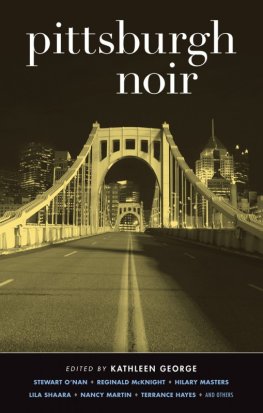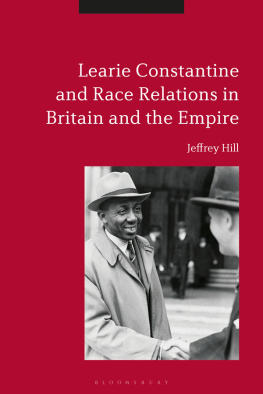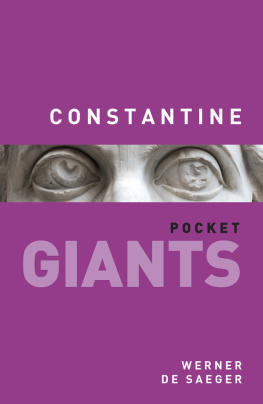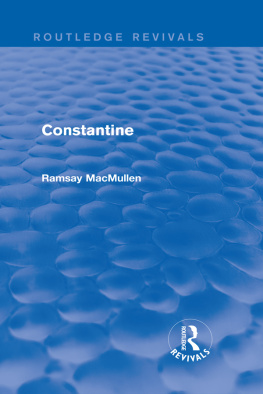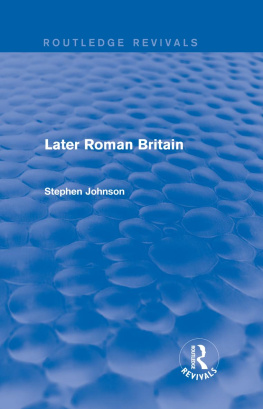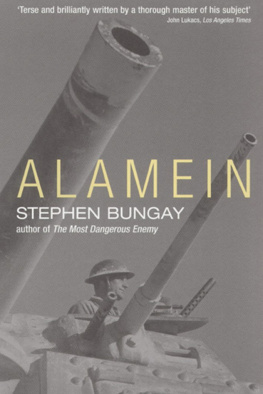SEMINAR STUDIES IN HISTORY
Unemployment in Britain between the Wars
First published 1980 by Pearson Education Limited
Published 2014 by Routledge
2 Park Square, Milton Park, Abingdon, Oxon OX14 4RN
711 Third Avenue, New York, NY 10017, USA
Routledge is an imprint of the Taylor & Francis Group, an informa business
Copyright 1980, Taylor & Francis.
All rights reserved. No part of this book may be reprinted or reproduced or utilised in any form or by any electronic, mechanical, or other means, now known or hereafter invented, including photocopying and recording, or in any information storage or retrieval system, without permission in writing from the publishers.
Notices
Knowledge and best practice in this field are constantly changing. As new research and experience broaden our understanding, changes in research methods, professional practices, or medical treatment may become necessary.
Practitioners and researchers must always rely on their own experience and knowledge in evaluating and using any information, methods, compounds, or experiments described herein. In using such information or methods they should be mindful of their own safety and the safety of others, including parties for whom they have a professional responsibility.
To the fullest extent of the law, neither the Publisher nor the authors, contributors, or editors, assume any liability for any injury and/or damage to persons or property as a matter of products liability, negligence or otherwise, or from any use or operation of any methods, products, instructions, or ideas contained in the material herein.
ISBN 13: 978-0-582-35232-2 (pbk)
British Library Cataloguing in Publication Data
Constantine, Stephen
Unemployment in Britain between the Wars.
(Seminar studies in history).
1. Labour supply Great Britain History 20th century
I. Title II. Series
331. 137941 HD5765.A6
Set in 10/11 Press Roman, IBM
Contents
The seminar method of teaching is being used increasingly. It is a way of learning in smaller groups through discussion, designed both to get away from and to supplement the basic lecture techniques. To besuccessful, the members of a seminar must be informed or else, in the unkind phrase of a cynic it can be a pooling of ignorance. The chapter in the textbook of English or European history by its nature cannot provide material in this depth, but at the same time the full academic work may be too long and perhaps too advanced.
For this reason we have invited practising teachers to contribute short studies on specialised aspects of British and European history with these special needs in mind. For this series the authors have beenasked to provide, in addition to their basic analysis, a full selection of documentary material of all kinds and an up-to-date and comprehensive bibliography. Both these sections are referred to in the text, but it is hoped that they will prove to be valuable teaching and learning aids in themselves.
Note on the System of References:
A bold number in round brackets (5) in the text refers the reader to the corresponding entry in the Bibliography section at the end of the book. A bold number in square brackets, preceded by doc [docs 6,8] refers the reader to the corresponding items in the section of Documents, which follows the main text.
PATRICK RICHARDSON
General Editor
In preparing my text I received much help and valued criticism from two of my colleagues, Dr Eric Evans and Dr Gordon Phillips. I am grateful for their assistance. I also wish to record my sincere thanks for the admirable secretarial support I have received from Miss Linda Parkinson and from Wendy, my wife.
Stephen Constantine
We are grateful to the following for permission to reproduce copyright material: The Rt. Hon. Julian Amery, M.P. for an extract from a letter by L.S. Amery to Stanley Baldwin dated 11th Feb. 1924 from the Amery Papers Box G. 82; H.L. Beales for extracts from Memoirs of the Unemployed edited by H.L. Beales and R.S. Lambert, pub. by Victor Gollancz Ltd; The Controller of Her Majestys Stationery Office for data from Investigation in the Coalfields of South Wales Cmd. 3272 and Third Report of the Commissioner for the Special Areas Cmd. 5303; James Nisbet & Co. Ltd for extracts from The Unemployed Man by E.W. Bakke.
Cover: Workless poster from the Labour Party archives (in fact dating from a slightly earlier period). Photo: Michael Holford.
For many years historians have been struggling to modify a deeply entrenched view which regards the interwar period, and especially the 1930s, as essentially a time of persistent depression, gloom and failure. In contrast they have properly emphasized the real achievements of these two decades. Far from being uniformly years of suffering, there was much that justified celebration. Greatly helped by a fall in the cost of living in the 1920s and early 1930s, average real wage earnings between the wars went up, until by 1938 they were perhaps one-third higher than in 1913 (). The expansion of the chemical, motor car, electrical and other consumer goods industries and of the retailing trade provided better-paid jobs for more workers. Moreover, parents were limiting the size of their families and with fewer mouths to feed incomes went further. On average, hours of work were also down. As a result more and more people were left with higher real earnings and greater leisure.
The consequence was a conspicuous improvement in the living standards of the majority of people in Britain. For some it brought real affluence, perhaps the opportunity to own a sparkling mass-produced motor car, an Austin or a Morris, or a chance to buy a semi-detached house with a garden and modern conveniences in one of the new estates being laid out in the suburbs. For many more people it meant at least some additional domestic comforts. Better equipped, newly built council houses were available for rent; modern furniture, radios, labour-saving household equipment such as electric cookers and other consumer goods could be bought. There was more cash left over for entertainments. Audiences packed the cinemas and dance halls with regular enthusiasm, and more people were taking annual holidays, many in the holiday camps which sprang up on the coast in places like Skegness and Pwllheli. Most strikingly, social investigators found a marked drop in the number of people condemned to live in poverty. Dire need still regrettably existed, but it was much less prominent between the wars than it had been in the supposedly golden days of Edwardian England.
Another valuable result of higher incomes was an increase in the consumption of better food: more vegetables, fruit and dairy products for ).
And yet these realities have on the whole failed to prevent a bitter and gloomy image of the interwar years from surviving to this day. These years are still characterised as a period of mass unemployment when, particularly in the North and in Wales, once prosperous industries and the workers who served them were suffering. There remain sharp pictures of out-of-work men clustered at dusty street corners, and of the abandoned shipyards at Jarrow on the Tyne []. Indeed, set against the average rise in living standards and the prosperous regions of the country, the wasted years of the unemployed and the decay of the depressed areas stand out more starkly. Unemployment was as much a feature of the 1920s and 1930s as busy new factories, modern housing estates and cinemas built like fantasy palaces.
The problem of unemployment was not new to British society. It had been a recurrent blight in the nineteenth and early twentieth centuries, and the bitterness and distress it caused lay behind many of the social and political disturbances of those years. What was unprecedented about the interwar unemployment problem was its extent, its duration and its effects.


